Delian League › Delos › The Eastern Perspective on the Trinity » Origins and History
Articles and Definitions › Contents
- Delian League › Origins
- Delos › Origins
- The Eastern Perspective on the Trinity › Origins
Ancient civilizations › Historical places, and their characters
Delian League › Origins
Definition and Origins
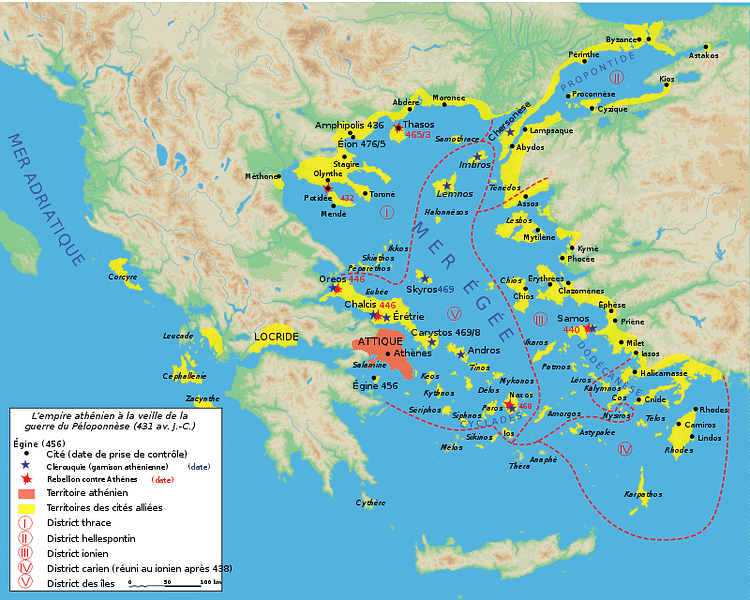
The Delian League (or Athenian League) was an alliance of Greek city -states led by Athens and formed in 478 BCE to liberate eastern Greek cities from Persian rule and as a defence to possible revenge attacks from Persia following the Greek victories at Marathon, Salamis, and Plataea in the early 5th century BCE. The alliance of over 300 cities would eventually be so dominated by Athens that, in effect, it evolved into the Athenian empire. Athens became increasingly more aggressive in its control of the alliance and, on occasion, constrained membership by military force and compelled continued tribute which was in the form of money, ships or materials. Following Athens' defeat at the hands of Sparta in the Peloponnesian War in 404 BCE the League was dissolved.
MEMBERSHIP & TRIBUTE
The name Delian League is a modern one, the ancient sources refer to it as simply 'the alliance' ( symmachia ) or 'Athens and its allies'. The name is appropriate because the treasury of the alliance was located on the sacred island of Delos in the Cyclades. The number of members of the League changed over time but around 330 are recorded in tribute lists; sources which are known to be incomplete. The majority of states were from Ionia and the islands but most parts of Greece were represented and later there were even some non-Greek members such as the Carian city-states. Prominent members included: Aegina, Byzantium, Chios, Lesbos, Lindos, Naxos, Paros, Samos, Thasos, and many other cities across the Aegean, in Ionia, the Hellespont, and Propontis.
MEMBERS WERE EXPECTED TO GIVE TRIBUTE TO THE TREASURY WHICH WAS USED TO BUILD AND MAINTAIN THE NAVAL FLEET LED BY ATHENS.
Initially members swore to hold the same enemies and allies by taking an oath. It is likely that each city-state had an equal vote in meetings held on Delos. Members were expected to give tribute ( phoros ) to the treasury which was used to build and maintain the naval fleet led by Athens. Significantly too, the treasury was controlled by Athenian treasurers, the ten Hellenotamiae. The tribute in the early stages was 460 talents (raised in 425 BCE to 1,500), a figure decided by Athenian statesman and general Aristides. An alternative to providing money was to give ships and/or materials (especially timber) and grain.
SUCCESSES & FAILURES
The Delian League enjoyed some notable military victories such as at Eion, the Thracian Chersonese, and most famously, at the Battle of Eurymedon in 466 BCE, all against Persian forces. As a consequence Persian garrisons were removed from Thrace and Chersonesus. In 450 BCE the League seemed to have achieved its aim if the Peace of Kallias is to be considered genuine. Here the Persians were limited in their field of influence and direct hostilities ended between Greece and Persia.
Other successes of the League were not military but economic and political, making them more difficult to determine in their significance and real effect for all members. Piracy was practically eliminated in the Aegean, inter-city trade increased, a common coinage was introduced (the Athenian silver tetradrachm), taxation became centralised, democracy as a form of government was promoted, the judiciary of Athens was accessible to member's citizens, and such tools as measurement standards became uniform across the Aegean. The primary beneficiary of all of these was certainly Athens and the massive re-building project of the city, begun by Pericles and which included the Parthenon, was partially funded by the League treasury.
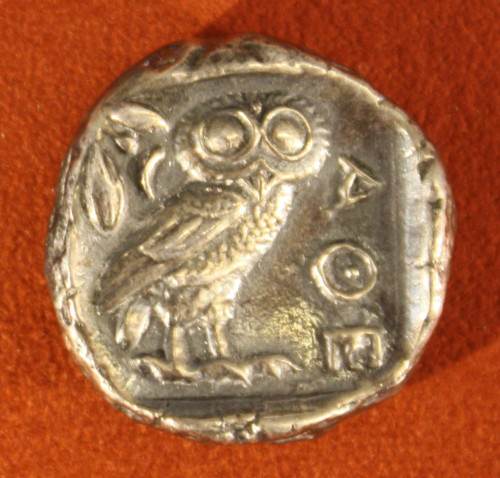
Athenian Silver Tertradrachm
The League and its requirement of tribute was not always to the liking of its members and some did try and leave, especially as the threat from Persia gradually receded and the calls for tribute increased. A notable example is Naxos who sought to secede c. 467 BCE. Athens responded in dramatic fashion by attacking the island and making it a semi-dependency, albeit with a lower tribute. Thasos was another member who disagreed with Athens and wanted to keep control of its mines and trade centres. Again, the Athenians responded with force in 465 BCE and lay siege to the city for three years. Eventually, Thasos capitulated.
FROM ALLIANCE TO EMPIRE TO COLLAPSE
Already looking like an Athenian empire, two further episodes changed the League forever. In 460 BCE the First Peloponnesian War broke out between Athens, Corinth, Sparta, and their allies. For the first time the League was being used against Greek city-states and Persia was off the agenda. Then c. 454 BCE Athens used the excuse of a failed League expedition in Egypt (to aid the anti-Persian prince Inarus) to move the League treasury to Athens.
The League became, thenceforth, ever more difficult to keep in toe. In 446 BCE Athens lost the Battle of Koroneia and had to repress a major revolt in Euboea. An even more serious episode occurred when fighting between Samos and Miletos (both League members) was escalated by Athens into a war. Again the Athenians' superior resources brought them victory in 439 BCE. Yet another revolt broke out in Poteidaia in 432 BCE which brought Athens and the Delian League in direct opposition to Sparta's own alliance, the Peloponnesian League. This second and much more damaging Peloponnesian War (432-404 BCE) against a Persian-backed Sparta would eventually, after 30 years of gruelling and resource-draining conflicts, bring Athens to her knees and ring the death knell for the Delian League. Such disastrous defeats as the 415 BCE Sicilian Expedition and the brutal execution of all males on rebellious Melos the previous year were indicators of the desperate times.Athens' glory days were gone and with them, so too, the Delian League.
CONCLUSION
The benefits of the League had been, certainly, mostly for the Athenians, nevertheless, it is significant that the realistic alternative – Spartan rule – would not have been and, from 404 BCE, was not any more popular for the lesser states of Greece. This is perhaps indicated by their willingness to re-join with, albeit a weaker and more militarily passive, Athens in the Second Athenian Confederacy from 377 BCE.
Delos › Origins
Definition and Origins

Delos is a Greek island in the Cyclades archipelago which was both an influential political force and, with its sanctuary to the god Apollo, an important religious centre in the Archaic and Classical periods. The island was also a major commercial and trading centre in the 2nd and 1st centuries CE.
DELOS IN MYTHOLOGY
Delos, measuring a mere 3 km², is a small island without any particular advantages for habitation due to its barrenness and lack of water. In Greek mythology, this is precisely why Leto, escaping the wrath of Hera, was able to find sanctuary here in order to give birth to Apollo and Artemis. In some versions of the myth, Zeus (Leto's lover) called on his brother Poseidon to create the island with a thrust of his trident, hence the name Delos, which signifies 'appearance' or 'apparent' in ancient Greek.The ancient Greeks also considered the island the centre of the Cycladic group and as the last resting place of the Hyperboreans - a legendary northern race of Apollo-worshippers.
THE ANCIENT GREEKS CONSIDERED THE ISLAND THE BIRTHPLACE OF APOLLO AND THE CENTRE OF THE CYCLADES ISLANDS.
HISTORICAL OVERVIEW
The island was first inhabited in the early Bronze Age, and Mycenaean tombs have been excavated dating from the late Bronze Age. Colonised from Ionia in the mid-10th century BCE, it was not, however, until the 8th century BCE that the site began to take on a religious significance in the wider Greek world. Athens, under Pisistratus, took a greater interest in the island in the 6th century BCE and attempted to purify the island by a 'catharsis' - removing and prohibiting burials on the island from c. 540 BCE.
Delos further increased its importance when it was chosen as the meeting place and treasury for the Delian League in 478 BCE. In 454 BCE the treasury was moved to Athens and the Athenians also took over administration of the site. Administration changed hands when Antigonus established the League of Islanders in 314 BCE, which included Delos.
Following the Chremonidean War (266-229 BCE), Delos became an independent polis for the next 150 years or so and was administered by a religious council of hieropoioi. In this period, the island enjoyed the generous patronage of various Hellenistic kings. The island's independence came to an end in 166 BCE when the Romans gave control of Delos back to Athens, also making it a free trade port. This brought another period of prosperity, and the island became an important centre for the slave trade whilst its population greatly increased in size and ethnic diversity, a fact reflected in the adoption of diverse religious cults on the island, such as those to Sarapis and Isis. Things took a turn for the worse, however, when the island was sacked first by Mithradates VI ’s general, Archelaus, in 88 BCE and then again by pirates in 69 BCE, events which brought about the island's gradual and permanent decline.
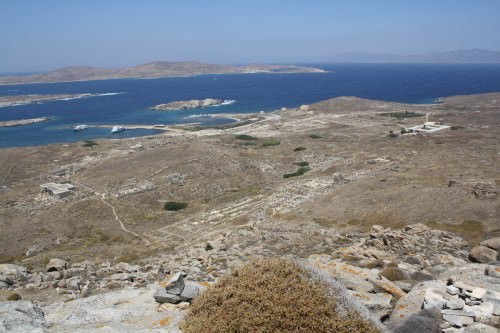
Delos Panorama
THE SANCTUARY OF DELOS
The island was first excavated by a team of French archaeologists from 1873 CE, revealing the true extent of the religious site.The island once had temples dedicated to Apollo (the Artemission), Leto (the Letoon), Artemis, Hera (the Heraion), Zeus, Athena, Hercules, and Asclepius. The Temple of Apollo housed, from the 6th century BCE, an 8 m high cult statue of the god made of wood and covered in gold. There was also a temple dedicated to the twelve Olympian gods (the Dodekatheon).Several other sacred buildings have also been identified but their exact purpose is unclear.
The Pan ēgyris, an Ionian festival in honour of Apollo, was held every year on the island and in the late 5th century BCE, a spectacular (Athenian inspired) festival - the Delia - was held every five years. The accompanying athletic games and musical and dancing contests attracted visitors from across the Aegean. Victors in the Delian games climbed the island's Mt. Kynthos in order to be crowned.
As with other major sanctuaries, Delos had a diverse complex of buildings, including a monumental gateway entrance ( propylaea ) to the site, a theatre (c. 300 BCE, capacity: 5,000 spectators), stadium, several stoas (for example, of Antigonus), gymnasium, hippodrome, palaestras (3rd and 2nd centuries BCE), a hippostyle hall (constructed in the 3rd century BCE) an agora (built under Theophrastus in the 2nd century BCE), and even a sacred lake, guarded by marble lions.
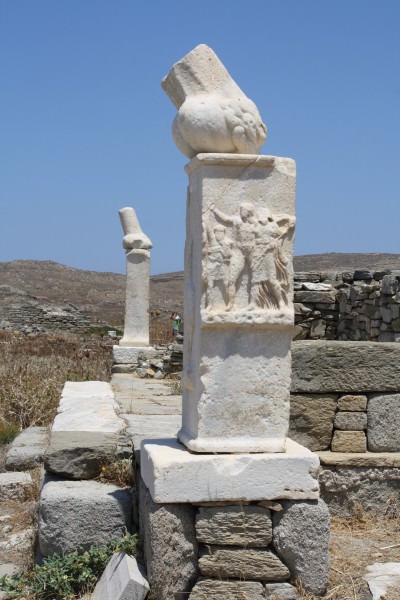
Column Phallus, Delos
Beyond the sanctuary of Apollo, there were also sanctuaries testimony to the city ’s one-time cosmopolitan make-up, with temples to Isis, Serapis and Cabeiri. Commercial buildings on the island included markets and warehouses, and the residential area dating from the 2nd century BCE displays grid street plans and large houses, which, with their mosaics, wall paintings, and colonnades, are testimony to the islands one-time prosperity.
Notable archaeological finds at the site are the famous marble lions, much weather-worn but still retaining a regal air. Of these, five lions survive from the original nine dedicated by the Naxians in the 7th century BCE. In addition, several fine mosaics have been uncovered, including one depicting Dionysos seated on a panther.
The Eastern Perspective on the Trinity › Origins
Ancient Civilizations
All too often, the Eastern perspective on the Trinity is mistakenly overlooked by Western society in the study of Church History.This is unfortunate, for men like Gregory of Nazianzus (329–390 CE) and John of Damascus (676–749 CE) offered insightful understandings in the first centuries of early Christianity regarding the theological understanding of the Trinitarian relationship in the Hebrew and Greek biblical texts. In their own literary works, both Gregory and John sought to answer questions concerning the equality of the members of the Divine Family, the distinguishing aspects of each person, the origins and procession of the Son and Holy Spirit, as well as the interaction and influence between them all.
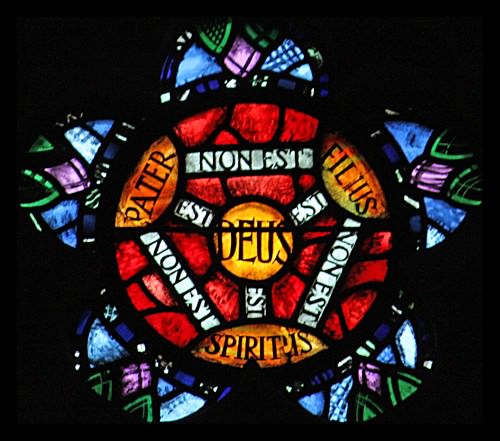
Holy Trinity
Some fine examples of the doctrinal contributions of Gregory and John concern the equal standing of the Holy Spirit with the Father and the Son. As Sahinidou states,
The Eastern Church Fathers borrowed both the verb and the noun from Anaxagoras where it means revolution, rotation as cosmic differentiation, ordering, continuation, and extension. The noun περιχώρησις names the process of making room for another around oneself, or to extend one's self round about. (552-553)
Although these ancient theologians' interpretations may not be totally exhaustive, they are still valuable, nonetheless, in understanding the development of Trinitarian thought that began in the 4th and 5th centuries CE.
GREGORY OF NAZIANUS ON THE SPIRIT
In his work, The Fifth Theological Oration - On The Spirit, Gregory of Nazianzus argues for the divinity of the Spirit. In this oration, he provides his exhaustive depiction and discussion of the ontology and functionality of the Spirit and asserts its equality within the Divine Family. Opposing some 4th-century theologians who believed the Spirit to be subordinate to the Father and Son (and aligning with a key argument of the Cappadocian Fathers), he writes, "If he is in the same rank with myself, how can he make me God, or join me with Godhead?" (Nazianzus, The Fifth Theological Oration - On The Spirit, 196).
In Gregory's mind, the Holy Spirit must have equal status with the other godly members for "he is neither a creature, nor a thing made, nor a fellow servant, nor any of these lowly appellations" (Nazianzus, The Fifth Theological Oration - On The Spirit, 197). Appealing to evidence and logic, he suggests that any other understanding of the Spirit is unbiblical, "imperfect" (Nazianzus, The Fifth Theological Oration - On The Spirit, 198), and "absurd" (Nazianzus, The Fifth Theological Oration - On The Spirit, 197).
JOHN OF DAMASCUS ON THE TRINITY
John of Damascus also offers his take on this question of the Trinity. In Exposition of the Orthodox Faith, he remarks, "For the subsistences dwell in one another, in no wise confused but cleaving together" (Damascus, 10), and "the three holy subsistences differ from each other, being indivisibly divided not by essence but by the distinguishing mark of their proper and peculiar subsistence" (Damascus, 10). The Holy Spirit, then, is in equal unity and relation with the Father and Son. Although each member may focus on different roles, they are still of the same essence—meaning that throughout all is the divine nature and a divine interconnection.
Expanding upon their position on the Trinity, Gregory and John offer an even more detailed breakdown of the unique purpose and character of the Trinity, specifically of the Spirit. Gregory points out, "He is the Author of spiritual regeneration" (Nazianzus, Oration on Pentecost, 384). Furthermore, the Spirit is "Another Comforter, that you might acknowledge his co-equality" (Nazianzus, Oration on Pentecost, 383), and is the vehicle "by Whom the Father is known and the Son is glorified" (Nazianzus, Oration on Pentecost, 382). The Spirit has a distinctive mission suited to his divine character and talents.However, the Spirit also "shares with the Son in working both the creation and the Resurrection" (Nazianzus, Oration on Pentecost, 384). Therefore, biblically, the Spirit engages in certain unique activities (such as enlightening and sealing the salvation of believers, etc.), but is in ontological solidarity with the Father and Son and, at all times, in varying levels of participation with their activities, too.
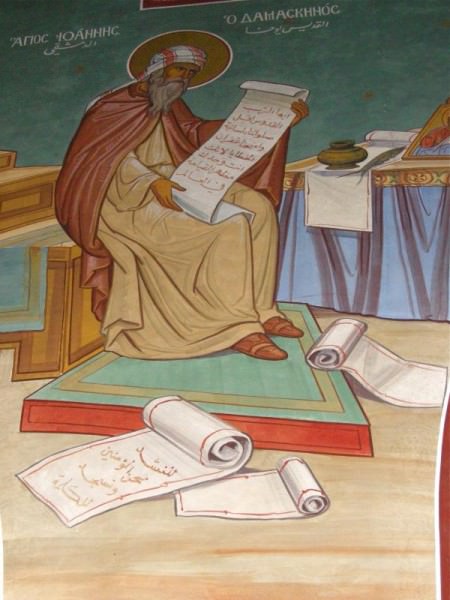
John of Damascus
John adds to Gregory's assertion when he succinctly states that the Holy Spirit exists "Having subsistence, existing in its own proper, and peculiar subsistence" (Damascus, 9). The Holy Spirit's subsistence is peculiar and unique. In other words, the Holy Spirit has the main focus of a particular activity even though the other members of the Trinity are still involved and supportive.This understood, John still maintains that the Spirit is "inseparable and indivisible from Father and Son, and possessing all the qualities that the Father and Son possess, save that of not being begotten or born" (Damascus, 9). Paradoxically, the Spirit is at one time distinguished from and yet unified with the other members of the Trinity.
RELATIONSHIP OF THE SPIRIT AND SON TO THE FATHER
Perceiving the conundrum this creates, John of Damascus attempts to further expound upon the relationship of the Spirit and Son to the Father. John suggests that the Father is the 'cause' of the Son and Spirit much in the same way that light is caused by a fire. He states, "Just as we do not say that fire is of one essence and light of another, so we cannot say that the Father is of one essence and the Son of another but both are of one and the same essence" (Damascus, 9). The two are intricately connected and one is not possible without the other. It is impossible to tell where one stops and the other begins, although some have differing opinions.
GREGORY OF NAZIANZUS ARGUES FOR THE DIVINITY OF THE SPIRIT AND ASSERTS ITS EQUALITY WITHIN THE DIVINE FAMILY.
Countering the idea that the Spirit may proceed from the Son, John suggests that with its unique purpose and character, the Spirit "is one Spirit, going forth from the Father, not in the manner of Sonship but of procession" (Damascus, 11). Jesus may have been begotten, but the Spirit was not. He points out that to say that the very force that helped incarnate the Son could even proceed from the Son would be illogical (if not impossible).
As Gregory states, the Spirit is not just a "grandson God" (Nazianzus, The Fifth Theological Oration - On The Spirit, 197).Additionally, when the New Testament speaks of the "Spirit of the Son," John asserts that the term refers to the confession that the Spirit is manifested and imparted to humanity through the Son much like the way the Sun is manifested through its rays and radiance to the one seeing it. It is in the profound sense of revelation, not just association.
HUMAN PERCEPTION OF THE GODHEAD
All of these contributions to Trinitarian understanding are valuable for theologians; however, in many ways, Gregory and John's teachings (as well as others in the Eastern and Western perspective) are problematic. Their examinations are extremely useful in defining what the Holy Spirit and the rest of the Trinity members are not. Most of the questions of conflict that Gregory and John analyze and discuss revolve around the reduction of the divinity of the Trinity and/or the anthropomorphizing their characters. For these ancient theologians, this approach was definitely unorthodox thinking (and dangerous), as it went against traditional Judeo-Christian biblical precedent.

Gregory of Nazianzus
Yet, in attempting to define what the Trinity is, these Eastern theologians were still restricted to using human terms in their definitions. If the Father, Son, and Holy Spirit are transcendent and supernatural, then any symbols attached to them can only be a partial reflection of what they really are, and any definition is limited by human communication and reasoning. John of Damascus attests to this when he states, "It is quite impossible for us men clothed about with this dense covering of flesh to understand or speak of the divine and lofty and immaterial energies of the Godhead" (Damascus, 13).
Furthermore, the human perception of the Godhead, then, is limited to what one experiences concerning God and what one reads in the Bible of his essence and attributes. As Tertullian, the Father of the Latin Church (c. 155 – c. 240 CE) put it,
For by whom has truth ever been discovered without God? By whom has God ever been found without Christ?By whom has Christ ever been explored without the Holy Spirit? By whom has the Holy Spirit ever been attained without the mysterious gift of faith? (Tertullian, A Treatise on the Soul ).
Wesley, the founder of the Methodist movement also proclaimed, "Indeed, how can we expect that a man should be able to comprehend a worm. How much less can it be supposed, that a man can comprehend God!" (Wesley, Sermon 67).
Furthermore, human experience and perception is always influenced by the surrounding culture, which could shift the focus one way or another. Thus, the Eastern perspective is valuable, but it cannot fully encompass the whole of Trinitarian thought as its interpretation is limited by social influencers/restrictions and cognitive limitations of its examiners—as is true for all past and future theologians.
CONCLUSION
Despite these complications, both Gregory of Nazianzus and John of Damascus courageously and resolutely sought to answer very difficult questions and explore various controversial assumptions regarding the Trinity. The conclusions they came to may not be conclusive, but through their efforts to safeguard doctrinal truths, they battled what they considered to be heretical thought and, in turn, helped enlighten the world to a logical, more systematic, functional understanding of the relationship between the Father, Son, and Holy Spirit. Modern theology is truly in their debt for, in a great sense, Gregory and John took the question of the Trinity out of sheer speculation and moved it into the realm of scholarly contemplation, scrutiny, and study.
LICENSE
Article based on information obtained from these sources:with permission from the Website Ancient History Encyclopedia
Content is available under License Creative Commons: Attribution-NonCommercial-ShareAlike 3.0 Unported. CC-BY-NC-SA License